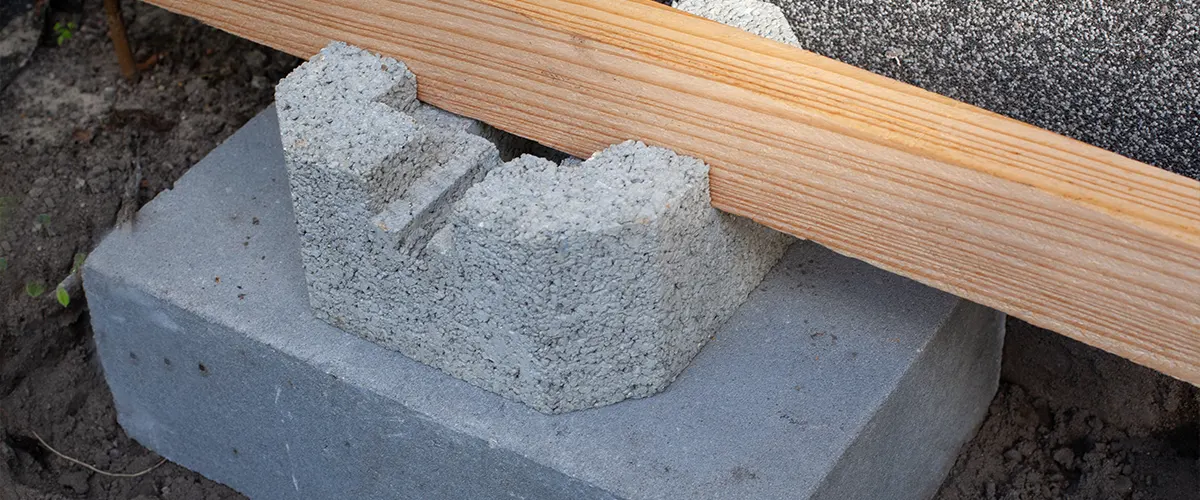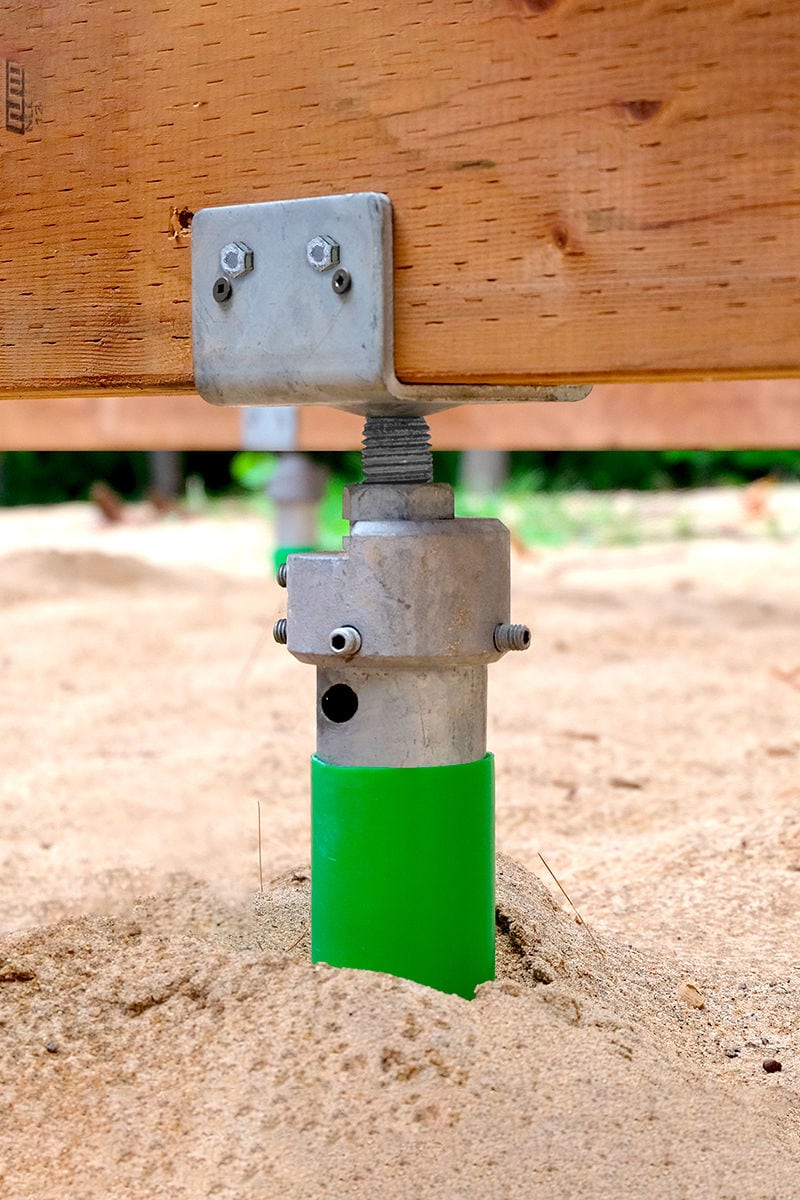Professional Tips for Putting Up Deck Footings to Support Your Outdoor Room
When it comes to developing a deck, one of the most essential aspects to think about is the setup of appropriate grounds. These grounds are the structure upon which your exterior room will certainly relax, providing stability and support for years to come. What exactly does it take to install deck footings correctly?
Importance of Proper Deck Grounds
Appropriate deck grounds are necessary for making sure the stability and long life of your outdoor room. Without strong and properly mounted footings, your deck might end up being unstable, leading to safety and security risks and costly fixings.

Along with security, appropriate deck footings also add to the longevity of your exterior area (Deck Footings). Footings that are designed and built to stand up to the aspects and dirt problems in your area will certainly assist avoid the deck from working out or shifting with time. By making certain the footings are properly sized and mounted, you can lessen the risk of damages to the deck structure, expanding its life expectancy and minimizing the need for pricey repair work or replacements

Picking the Right Sort Of Footings
When picking the suitable type of grounds for your deck, it is necessary to think about aspects such as dirt problems, neighborhood building codes, and the general style of your outside area. The sort of footing you select will certainly play an important duty in making certain the security and long life of your deck.
One common sort of ground is the concrete footing. Concrete footings appropriate for a lot of dirt problems and provide outstanding support for decks. They are commonly mounted below the frost line to avoid moving and clearing up as a result of cold and thawing cycles. Another option is helical piers, which are perfect for locations with unpredictable dirt or high water tables. These piers are screwed into the ground and offer strong support for the deck.
In some cases, you might require to make use of customized grounds, such as heap grounds or deep foundations, if you are developing a huge or multi-level deck. These footings are designed to distribute the weight of the deck over a bigger location, making sure security and preventing sinking or resolving.
Before selecting a sort of footing, it is necessary to consult local structure codes and laws to guarantee compliance. In addition, take into consideration the design and planned usage of your exterior area. Elements such as the size, form, and load-bearing needs of your deck will certainly influence the type of footing that is most ideal.
Preparing the Ground for Footing Installment
To properly prepare the ground for footing setup, it is important to examine the dirt conditions and take essential steps to make sure security and toughness of the deck. The very first action is to excavate the location where the footings will be mounted.
As soon as the location has actually been excavated, the following step is to portable the soil. This can be done using a plate compactor or by utilizing a hand meddle. Compacting the dirt helps to eliminate any type of gaps or air pockets, which can bring about clearing up and instability gradually.
After condensing the soil, it is essential to lay a layer of gravel or smashed stone at the end of the excavation. This will give drainage and assistance to stop water from merging around the grounds, which can cause disintegration and his comment is here instability.
Step-by-Step Guide to Setting Up Deck Footings
After properly preparing the ground for footing installation, the next action is to start the process of mounting deck footings. This step-by-step overview will certainly offer you with a clear understanding of how to set up deck grounds for your outdoor area.
Figure out the area: Start by noting the positions of the deck footings utilizing risks and string. Ensure that the areas straighten with the design and layout of your deck.
Dig the holes: Use a message opening digger or an auger to dig the holes for the grounds. The depth and size of the openings should be in accordance with regional building codes and the details requirements of your deck layout.
Degree the holes: Use a level to guarantee that the holes are dug to the appropriate depth and are level with each other. (Deck Footings)
Add gravel: Place a layer of gravel at the end of each opening to boost water drainage and avoid the wood from decomposing.
Place the footings: Put the grounds right into the holes, making certain they are degree and plumb. Use a degree and a gauging tape to ensure accuracy.
Safeguard the grounds: Put concrete into the holes around the grounds, loading them to the top. Utilize a message degree to ensure the grounds stay level as the concrete collections.
Allow time for healing: Allow the concrete cure according to the supplier's directions before waging the deck construction.
Usual Errors to Prevent During Footing Installment
One vital element to think about during the installation of deck footings is staying clear of common blunders that can jeopardize the stability and long life of your outside room. While deck footings may look like a uncomplicated and easy part of the building and construction process, neglecting specific elements can lead to pricey repair services and potential safety and security risks down the line.

Furthermore, neglecting to set up proper drainage procedures can trigger water to accumulate around the grounds, causing rot, decay, and the ultimate weakening of the deck's structure. Making use of the wrong type of footing product or falling short to properly safeguard the footings can jeopardize their structural stability.
To stay clear of these mistakes, it is important to seek advice from an expert or adhere to sector guidelines to make sure correct footing installation. By doing so, you can make hop over to here sure the security and longevity of your outside area, giving a safe and pleasurable environment for many years to find.
Final Thought
Finally, installing proper deck footings is crucial for the stability and longevity of your outdoor space. By choosing the best type of footings Extra resources and effectively preparing the ground, you can make sure a strong structure for your deck. Complying with a detailed guide and preventing typical errors during footing installation will certainly additionally improve the sturdiness and safety and security of your deck.
Correct deck grounds are necessary for making certain the security and durability of your outside space. The footings offer as a link between the deck and the ground, allowing the weight of the deck and its occupants to be dispersed evenly right into the dirt.One typical type of ground is the concrete ground. Place the footings: Position the grounds right into the holes, making sure they are degree and plumb. Protect the footings: Pour concrete right into the openings around the footings, loading them to the top.
Comments on “Architectural Honesty Issues: Picking the Right Deck Footings for Your Outdoor Project”